Sam Slough: Secrets of a successful direct mail programme
August 9, 2023
Patrick Gibbels: Commission proposes to facilitate the activities of cross-border associations
October 4, 2023Ageing supporters, rising online giving, and donation volatility mean nonprofits are tackling the triple challenge of renewing their donor base, conversion and retention. From now on, says Charlène Petit, founder of Facteur Digital, and the FILantropio podcast, their resilience will depend on their ability to embrace the New Deal of Digital, AI and Donor Experience Design 2.0.
Digital technology in the charitable sector is a bit like the Loch Ness monster: it’s exciting fodder for discussion, but nearly impossible to spot in action. While most charities are aware that they need to develop their digital culture, they don’t know how to handle the “beast” due to a lack of training and skills.
Seven deadly sins are preventing organizations from achieving digital maturity:
- A short-sighted, ROI-based approach, preventing organizations from fully investing in a digital long-term transformation. Usually this is due to a lack of resources, expertise, time and talent. Interestingly, a good long-term decision often yields disappointing short-term results.
- A lack of digital expertise on boards of directors, leading to antagonism between directors and employees over digital’s place. Directors often fail to show leadership on this subject, and don’t understand the resources and skills required. Digital campaigns are often treated as one-offs, which – unless financial results are positive in the short term – renders any attempt to invest in digital superfluous.
- Major internal discord caused by a lack of understanding about the opportunities offered by digital marketing and how to use the tools.
- Digital goals that aren’t linked to any strategy. In most cases, these goals are not formally presented in a strategic plan, let alone an action plan. Without precise objectives or performance indicators, organizations often make do with “quick wins”.
- Absence of a budget dedicated entirely to digital, which means organizations work on a piecemeal basis, and digital projects are budget lines within other budget items with no way to easily manage the digital budget as a whole.
- Data analysis is lacking with topics mostly limited to viewing statistics, open or click-through rates. Generally speaking, organizations don’t know their conversion statistics, and are under-equipped with the tools and knowledge to do so.
- Too much siloing between different organizational functions, particularly between fundraising, marketing and communications activities. This is a considerable hindrance towards growth, as failure to ensure communication between all the building blocks of an organization’s ecosystem prevents the adoption of a cross-functional and iterative approach.
These major pitfalls are accompanied by challenges that cannot be met with half-truths or half-measures. It’s becoming vital for many organizations to move out of reactive mode and into proactive mode – future generations of donors are 100% digital.
The other major challenge is to remain visible in a hyper-competitive and disrupted market, marked by hyper-choice and the arrival of new trusted third parties. Knowing how to communicate one’s promise and value proposition online is a minimum requirement for existence nowadays. Becoming a media brand is an undeniable asset. Successful organizations know how to continuously tell their story to stay top of their audience’s mind.
Case in point is The diary of Louise by Relief. To raise awareness of its services, the organization created an online platform featuring the fictional Louise, who lives with anxiety and shared her ups and downs every week for a year. Brand content is definitely a powerful ally for digital projects.
Grant-making foundations will have a decisive role to play in this conversion, by providing adequate funding to accelerate the sector’s digital transformation. The cost of inaction is all too often overlooked, and will likely be even higher with the advent of artificial intelligence.
The rise and pitfalls of AI
In the space of a few months, AI has become the talk of the town with the arrival of ChatGPT making its impact on our lives and businesses tangible and concrete. We’re entering a civilizational revolution that’s as exciting as it is terrifying, and the challenge will be to strike a balance between innovation and the preservation of human dignity.
The philanthropic world is no exception to this technological tsunami, and those involved must seriously consider the risks and opportunities of integrating algorithmic tools into their practice. Here are the 10 commandments to take into account:
- Conduct an impact analysis before implementing AI.
It’s important to identify the upstream consequences of a major organizational change on teams, operational processes and even corporate culture, to ensure adoption is accepted and understood.
- Define the place and function of AI within your organization.
We all agree automation of repetitive, low value-added tasks is desirable, but what about the generation of text and images? If you’re looking to stand out from the crowd and add heart and spirit to your content, humans will do a better job. On the other hand, ChatGPT can be a great help in developing personas and marketing strategies. Tasks based on information retrieval should also be treated with caution. Doing trend monitoring or researching potential donors can be less risky than informing customers via a chatbot equipped with AI.
- Adopt a policy for the responsible and supervised use of AI.
Use this to guarantee the protection of donors’ privacy, stating the nature and scope of the tasks entrusted to it, and ruling on the type of data that can be submitted to AI. This must be drawn up in collaboration with the employees responsible for applying it, and made public and accessible to donors, in the same way as a confidentiality policy.
- Gauge your relationship to the dispossession of your content.
Everything you inject into AI no longer belongs to you. If you ask it to put itself in the shoes of a donor and give its opinion on your brochure or communications, the elements submitted will certainly clarify your request, but also train the tool and feed future answers to other people’s questions. Google has said that any content made public on the internet could to be used to feed its AI assistant Bard, including websites, social networks and YouTube videos. It’s plausible that organizations will have to prioritize the content they distribute, from the most generic (and copyable) to the most differentiating, according to the degree of exclusivity they wish to have. It’s a safe bet that audio content formats, which are harder to copy than text, will become increasingly popular.
- Learn to avoid bias and utilitarian criteria.
Using algorithmic tools that are faster and more efficient than humans in terms of execution and data cross-referencing doesn’t mean you don’t need to think critically. We need to be more practical in our approach to AI, entrusting it with workflow optimization rather than decision-making. Take the case of a community foundation seeking to analyze several hundred grant applications within a tight timeframe with an external selection committee. Going through each application individually, entering the essential information in a pre-established criteria grid, is a colossal task. To escape the manual hell of cut-and-paste, the combination of AI and automation tools is a lifeline.
- The tool must not become an avatar of magical thinking for charities in need of everything (resources, talent, time).
Using ChatGPT as an ace up your sleeve, yes. Making it the master of your strategy, no. AI is a skill that comes on top of business expertise, and it’s essential to have that beforehand. Otherwise you’ll be undercutting AI’s full potential for your organization.
- Playing the transparency card to preserve trust.
The last thing a donor expects is for “love of humankind” to be embodied in artificially infused exchanges. At a time when we’re already worrying about the influence of AI on human relationships, isn’t it better to reveal the contexts in which we use it? Who knows, we may one day see the appearance of a “Not generated by AI” label.
- Only use AI to do better than before.
The tool must provide you with a leap in growth or productivity. Otherwise, you’re wasting your time.
- Don’t put all your eggs in one basket.
Over-reliance on third-party applications and services can limit your ability to function without them. AI is said to be the new electricity, but there’s no guarantee against blackouts. Once mass adoption and dependency have set in, the rules may change to our disadvantage, such as increasing subscription costs.
- What to do with the “time dividend”?
That’s the question every organization climbing on the AI bandwagon needs to answer. Productivity gains are good. Knowing what to do with it is better. The time saved in production can be invested in creation, iteration, training or simply in maintaining human relations through a donor experience strategy.
DXD (Donor Experience Design) reinvented
DXD, also known as Donor Experience (DX), takes its inspiration from Customer Experience (CX) by focusing on the design of a positive and meaningful experience for donors to build loyalty, further engage them and encourage them to support our cause on a regular basis.
In its early 2020s version, DXD is marked by a shift from audience to community. The difference between the two is engagement. The case study that best illustrates this trend is Team for the Planet (TFTP), with the exception that donors have been replaced by the company’s own nonprofit investors. Its aim is to raise a billion euros by 2030 to finance around a hundred innovations to combat greenhouse gases. TFTP excels at communicating its value proposition and mobilizing its associates to form a highly effective taskforce. The company ticks all the community-building boxes, enabling it to raise nearly $24 million euros in just three and a half years.
Canadian entrepreneur and Internet community builder, Greg Isenberg, developed the T.R.I.B.E. test to find out whether an organization (TFTP in our case) has created a community:
Togetherness — people have a space to be together. Collective intelligence is one of TFTP’s core values. Important decisions, such as which innovations to finance, are taken at the Annual General Meeting with all shareholders, enabling everyone to contribute in addition to their financial participation.
Rituals — people can participate in routines. With TFTP, associates are regularly asked to relay TFTP posts on social media using a turnkey kit.
Identity — people feel they’re with like-minded people. Many people connect on LinkedIn because they have TFTP in common, implying they share the same values of preserving the planet.
Belonging — people feel they’re part of something bigger than themselves. TFTP shareholders display their participation in the project on social networks with an “I joined” banner. They also list it as an additional position in their LinkedIn CVs.
Engagement — people consistently adding to the conversation without need for the brand. It’s even more powerful when the content is memorable. To celebrate the 100,000-associate milestone, TFTP released the first rap video for the climate which caused quite a stir on social media.
The charitable sector has plenty of good ideas to draw on from TFTP to assist in reinventing the donor experience in light of the major generational and behavioural transformations underway.
In a nutshell, nonprofits are caught in a double race against time: the inevitable catching up of their digital transformation in an ever-shortening timeframe, and preparing to leap into the AI vortex while there’s still time to have their say on ethics and usage. The great challenge for charities in the coming years will be to navigate the complex and ever-changing environment that sits at the intersection of virtual and real worlds.
 About Charlène Petit
About Charlène Petit
Charlène Petit debunks and vulgarizes philanthropy through her podcast FILantropio and her monthly newsletter Vitamine G. Based in Montreal since 2013, and after an eight-year career as a fundraising professional, she founded Facteur Digital. Her mission is to support charitable brands (nonprofits, foundations, NGOs) in their digital growth strategies and brand awareness by offering growth marketing consulting and brand content production services (podcast, storytelling, copywriting).
Picture by Ekaterina Bolovtsova on Pexels




